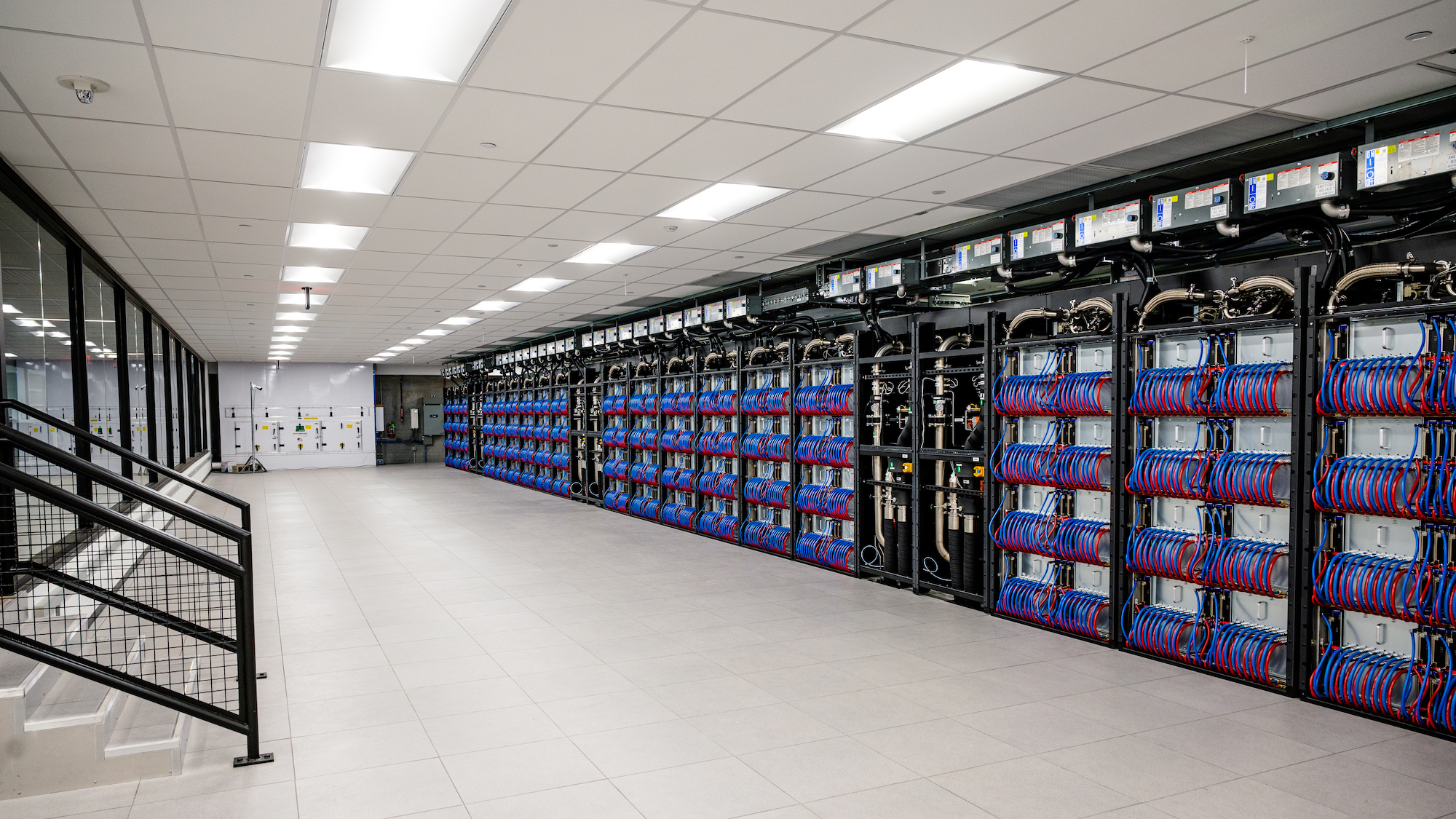

Argonne National Laboratory in Lemont, Illinois, is getting a new supercomputer, Aurora, which its scientists will use to study optimal nuclear reactor designs. As of now, the lab is using a system called Polaris, a 44-petaflops machine that can perform about 44 quadrillion calculations per second.
Aurora, which is currently being installed, will have more than 2 exaflops of computing power, giving it the capacity to do 2 quintillion calculations per second—almost 50 times as many as the old system. Once the unprecedented machine comes online, it’s expected to lead the TOP500 list that ranks the most powerful computers in the world. It was expected to start running earlier, but has had delays due to manufacturing issues.
A more powerful supercomputer means that nuclear scientists can simulate the fundamental physics underlying the reactions with as much detail as possible, which will allow them to make better assessments of overall safety and efficiency of new reactor designs. Reactors are the heart of a nuclear power plant. Here, a process called fission happens, leading to a series of nuclear chain reactions that produce incredible levels of heat, which is used to turn water into steam to spin a turbine that then creates electricity.
“Anyone out there that’s actively designing a reactor is going to use what we call ‘faster running tools’ that will look at things on a system-level scale and make approximations for the reactor core itself,” Dillon Shaver, principal nuclear engineer at Argonne National Laboratory, tells Popsci. “[At Argonne] we are doing as close to the fundamental physical calculations as possible, which requires a huge amount of resolution and a huge amount of unknowns. It translates into a huge amount of computation power.”
Shaver’s job, in a nutshell, is to do the math that prevents reactors from melting down. That involves a deep understanding of how different types of coolant liquids behave, how fluid flows around the different reactor components, and what kind of heat transfer occurs.
[Related: Why do nuclear power plants need electricity to stay safe?]
According to the Department of Energy, “all commercial nuclear reactors in the US are light-water reactors. This means they use normal water as both a coolant and neutron moderator.” And most active light-water reactors have a fuel pin geometry design, where large arrays of fuel pins (large tubes that contain the fuel, usually uranium, needed for fission reactions) are arranged in a rectangular lattice.
The next generation of reactor designs that Shaver and his team are investigating include wire-wrapped liquid metal fast reactors. The reactors are placed in a triangular lattice instead of a rectangular one, and are also layered with a thin wire that forms a kind of helix around the fuel pin. “This leads to some really complicated flow behavior because the [liquid metals like sodium] has to move around that wire and usually causes a spiral pattern to develop. That has some interesting implications on heat transfer,” Shaver explains. “A lot of time it enhances it, which is a very desirable thing” because it’s able to get more power out of a limited amount of fuel.
However, with the advanced designs like the wire wrap, “it’s a little bit more complicated to pump the fluid around these wires compared to just an open model,” he adds, which means that it could take more input energy too.

Another popular option is called a pebble bed reactor, which involves a series of graphite pebbles about the size of a tennis ball being embedded with the nuclear fuel. “You just randomly pat them into an open container and let fluid flow around them,” Shaver says. “That is a very different scenario compared to what we’re used to with light-water reactors because now all of the fluid can move through these random spaces between the pebbles.” Such a system has many benefits for low-energy cooling.
With the newly proposed designs, the goal is to ultimately generate more power while putting less in. “You’re trying to enhance the heat transfer you get from it, and the price you pay is how much energy it takes to pump it,” says Shaver. “There’s an interesting cost-benefit there.” Some of the tradeoffs can be significant, and these supercomputer simulations promise to give more accurate numbers than ever, allowing upcoming nuclear power plants to work with reactors that are as efficient and safe as possible.
